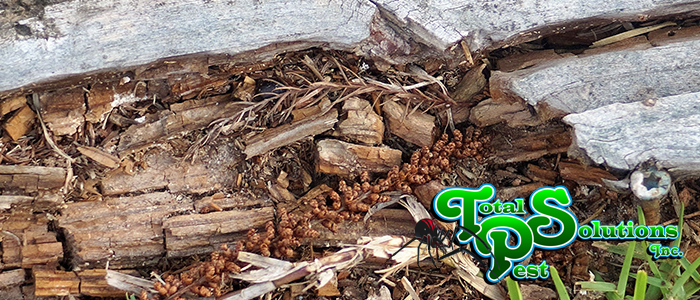
The thought of a house spider casually crawling up the wall is enough to terrify anyone. Common house spiders can range in size from “Aw, it’s so tiny” to the more common “Holy- is that a tarantula?!” Rest assured, it’s not a tarantula. Probably. Today, we’re exploring the topic of house spiders and how to prevent them. Let’s dig in.
Quick survey: how many legs does a spider have? Now, how many legs do you need to see before you freak out? Spiders are such a fun topic to tackle. These creepy crawlers are actually extremely useful for eating other pests like mosquitos. Spiders are opportunists. They spin their webs where they are likely to catch a meal. This is why you may see spider webs around your porch light after it has been on all night. But, that doesn’t make them welcome inside your home. Let’s talk the most common house spiders.
If a home or business located in the Polk County, FL area needs pest control services, contact us today. We’re always happy to help!
Common House Spiders
There are hundreds of different species of spiders that could be in a few mile radius of you. However, for this list we’re going to focus on three house spiders that nearly everyone has. Don’t panic. These three are not venomous to your family or pets. Although, that doesn’t make them any less ugly.
-
American House Spider
This spider is ranges in size, but is typically smaller than a quarter. It has (you guessed it) six legs, a brown, hairy body with a few white lines that travel down the abdomen. Although, after you smash it with a shoe you probably won’t see the lines well. These little buggers are attracted to different fly species. When they spin webs, it most likely looks like a traditional cobweb structure. If they’re on the ground, they hide under furniture in dark places.
-
Wolf Spider
Remember the tarantulas? Boom. These are the ones. Despite their appearance, they are not tarantulas. However, these spiders can often be palm sized. The entirety of its body is covered in a hair and can be shades of gray or brown. Wolf spiders don’t spin webs. Like their name suggests, they hunt for their food, moving fast and striking hard. It’s not often that these house spiders come inside. They prefer hiding to dodging, so they often go unnoticed. When they are, they may appear aggressive, attempting to run past you and escape. They have an impressive jump as well. So, unless you’re wanting to play catch, make someone else get them.
-
Daddy Long Legs
It wasn’t too long ago that kids would catch these house spiders to play with them. They are by far the most common spider that you could have hanging around your home. With a small brown body and very long legs, this house spider can be found in shady or dark places. This includes basements and sheds. Although, the can also be nesting under the lip of your roof. They nest close to one another, and can quickly become an eyesore.
Spiders can be very difficult to kill. Most store bought pest sprays do not kill them. However, professional pest control technicians can provide a solution. Total Pest Solutions services inside and outside of the home or business. Give us a call today to schedule an appointment.
continue reading
Related Posts
Holiday Pest-Free Homes in Winter Haven: Avoiding Cargo Pests As
Auburndale’s Mole Cricket Damage: Repairing Turf Before Frost As the
Lakeland’s Fall Termite Swarms: Early Detection Tips As the summer






